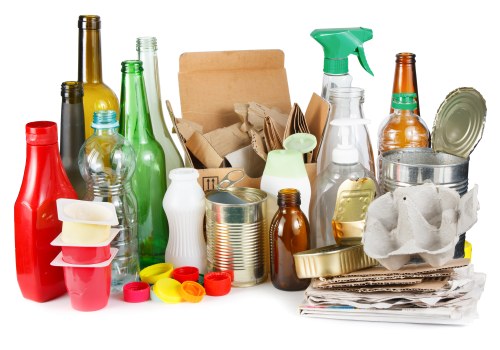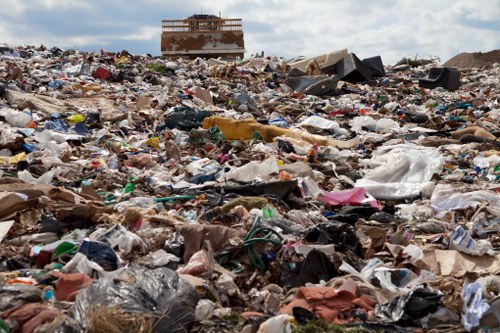Council Large Item Collection Elmstead

Managing large household items can be a challenging task for many residents of Elmstead. Whether it's an old refrigerator, bulky furniture, or outdated electronics, disposing of these items responsibly is crucial for maintaining a clean and sustainable community.
The Council Large Item Collection service in Elmstead provides a convenient solution for residents looking to dispose of their unwanted large items. This service ensures that items are collected efficiently and disposed of in an environmentally friendly manner, adhering to local regulations and recycling guidelines.
Understanding how the large item collection process works can help residents make the most of this valuable service. From scheduling a collection to preparing items for pickup, this guide covers everything you need to know about Council Large Item Collection in Elmstead.
How to Schedule a Large Item Collection

Scheduling a large item collection in Elmstead is a straightforward process designed to accommodate the busy schedules of residents. The council offers multiple ways to request a collection, ensuring accessibility for everyone.
Residents can schedule a collection online through the Elmstead Council website, by phone, or by visiting the local council office in person. It's important to provide accurate information about the items to be collected to ensure a smooth and efficient pickup process.
Advance booking is recommended, especially during peak seasons, to avoid delays. The council may offer specific collection days for different areas within Elmstead, so checking the schedule beforehand can save time and ensure that collections are made promptly.
Eligibility and Restrictions
Not all items may be eligible for council large item collection. It's essential to understand the eligibility criteria to ensure your items are collected without any issues.
Typically, the council accepts items that are no longer useful, safe to handle, and not hazardous. Items such as old mattresses, sofas, washing machines, and televisions often qualify for collection. However, there might be restrictions on the weight, size, or type of materials to be collected.
Hazardous materials, including paints, chemicals, and certain electronics, typically require special handling and cannot be included in the standard large item collection. Residents are encouraged to check the council's guidelines or contact the service directly for detailed information on restricted items.
Preparation for Collection
Proper preparation of items for collection ensures that the process is efficient and hassle-free. Before the scheduled collection, residents should ensure that items are accessible and ready for pickup.
Elements to consider include removing any non-removable parts, securing loose components, and placing items in a designated collection area. For items with sharp edges or broken parts, additional precautions should be taken to prevent injuries during handling.
Additionally, clear pathways should be maintained to facilitate easy access for collection teams. By preparing items adequately, residents contribute to a smoother collection process and help maintain the quality of service.
Types of Items Collected

The Council Large Item Collection service in Elmstead handles a variety of household items. Understanding the types of items that can be collected helps residents plan and utilize the service effectively.
Furniture: Large pieces of furniture such as sofas, chairs, tables, and beds are commonly collected. These items are often bulky and difficult to dispose of through regular waste channels.
Appliances: Old and non-functional appliances like refrigerators, washing machines, dryers, and ovens are eligible for collection. Proper disposal of these items is crucial due to the presence of potentially harmful materials like refrigerants.
Electronics and Other Items
Electronics, including televisions, computers, and audio equipment, are also part of the large item collection. These items may contain recyclable components, making their proper disposal important for environmental sustainability.
Other items such as mattresses, exercise equipment, and garden furniture may also be collected, depending on the council's guidelines. It's recommended to check the specific items accepted before scheduling a collection.
Non-Collectible Items
While the service handles many large items, certain items are not eligible for standard collection. These typically include hazardous materials, certain types of batteries, and items that require special disposal methods.
For items not eligible for large item collection, residents may need to use specialized disposal services or designated drop-off points. The council can provide information on alternative disposal options for these items.
Local Relevance: Nearby Areas

Elmstead is surrounded by several neighboring areas that also benefit from the Council Large Item Collection service. Understanding the proximity and unique features of these areas can help residents coordinate collections and ensure comprehensive service coverage.
- Shelsted: Located just north of Elmstead, Shelsted offers a vibrant community with easy access to collection services.
- Havering To the east, Havering is known for its spacious residential zones, making large item collection essential for maintaining cleanliness.
- Westerham: West of Elmstead, Westerham features a mix of urban and rural settings, requiring flexible collection schedules.
- Sevenoaks: South of Elmstead, Sevenoaks combines historical charm with modern amenities, including efficient waste management services.
- Farningham: Situated southwest, Farningham is a smaller community that relies on Elmstead's collection services for large items.
- Staplehurst: Northeast of Elmstead, Staplehurst benefits from regular collection intervals, ensuring timely disposal of large items.
- Otford: Adjacent to Elmstead, Otford enjoys streamlined collection processes due to its proximity.
- Ide Hill: Eastward from Elmstead, Ide Hill has specific collection days tailored to its community needs.
- Bridge Street: A central area near Elmstead, Bridge Street is a key hub for residents utilizing large item collections.
- Runwell: Located to the northwest, Runwell's residential areas are well-served by the council's collection services.
- Hadderley: South-southeast of Elmstead, Hadderley benefits from eco-friendly disposal practices promoted by the council.
- Westbrook: West-central Elmstead includes Westbrook, a locality with active participation in waste reduction initiatives.
- Belvedere: Close to Elmstead, Belvedere integrates the large item collection service seamlessly into its community life.
- Tippett's End: Northwest of Elmstead, Tippett's End enjoys flexible scheduling for large item pickups.
Environmental Impact

Proper disposal of large household items plays a significant role in protecting the environment. The Council Large Item Collection service in Elmstead emphasizes eco-friendly practices to minimize the ecological footprint of waste management.
Recycling and Disposal: Many large items collected by the council are processed for recycling. Materials like metal, wood, and certain plastics are separated and repurposed, reducing the need for new raw materials.
Reduction of Waste: By providing a reliable collection service, the council encourages residents to dispose of large items responsibly, preventing them from ending up in landfills and promoting a cleaner community.
Energy Conservation
Recycling large items contributes to energy conservation by reducing the energy required to produce new products. For example, recycling metal requires significantly less energy than extracting and processing raw ore.
Community Health Benefits
Proper disposal of large items helps maintain public health by preventing the accumulation of unwanted debris, which can attract pests and pose safety hazards. Clean neighborhoods foster a healthier living environment for all residents.
Tips for Efficient Collection
Sorting Items
Before scheduling a large item collection, residents should sort their items to facilitate the process. Separating items based on material type can aid in recycling efforts and streamline disposal.
For example, placing all metal items together and separating electronics from furniture ensures that each item is handled appropriately. Clear labeling and organized grouping can significantly speed up the collection process.
Safe Packaging
Ensuring that items are safely packaged protects both the items during transport and the collection team from potential injuries. Wrapping sharp edges and securing loose parts are essential steps in preparing items for pickup.
Using sturdy materials like cardboard boxes and plastic wraps can prevent damage and ensure that items remain intact throughout the collection process. Proper packaging also makes it easier for the collection team to handle and transport items efficiently.
Frequently Asked Questions
1. How do I request a large item collection in Elmstead?
You can request a large item collection by visiting the Elmstead Council website, calling the council's waste management hotline, or visiting the local council office in person. Make sure to provide details about the items you wish to dispose of.
2. Are there any fees associated with the large item collection service?
In many cases, the council offers the large item collection service free of charge. However, certain items or additional services may incur fees. It's best to check with the Elmstead Council for specific pricing details.
3. What types of items are not accepted for large item collection?
Hazardous materials such as chemicals, paints, and certain electronics are not accepted through the standard large item collection service. These items require special disposal methods and should be taken to designated drop-off points.
4. Can I schedule a same-day collection for urgent items?
Same-day collections are typically subject to availability and may not be guaranteed. It's recommended to schedule collections in advance to ensure timely pickup of your large items.
5. How should I prepare my items for collection?
Ensure that items are accessible and ready for pickup by placing them in a designated collection area. Remove any non-removable parts, secure loose components, and use appropriate packaging materials to protect the items and the collection team.
Frequently Asked Questions
Elmstead Council employs state-of-the-art equipment and trained professionals to ensure efficient and safe large item removal. Our team follows strict protocols to handle and transport items responsibly. Contact our Elmstead team for a quick quote.
Yes, Elmstead Council prides itself on eco-friendly practices, recycling up to 98% of collected materials. We prioritize sustainable disposal methods to minimize environmental impact. Reach out to our Elmstead experts to learn more.
Scheduling a pickup with Elmstead Council is easy. Simply contact our local team through our website or call our Elmstead office to arrange a convenient collection time. We're here to assist you promptly.
Elmstead Council is accredited by leading industry bodies, ensuring our large item collection services meet high standards of quality and reliability. Trust our certified team for your property clearance needs.
Absolutely. Elmstead Council holds all necessary certifications and comprehensive insurance to guarantee legal compliance and protect our customers. Feel confident using our trusted services.
Elmstead Council can collect a wide range of large items, including furniture, appliances, electronics, and more. For specific item inquiries, contact our Elmstead team for detailed assistance.
Elmstead Council offers competitive and affordable pricing for our large item collection services. We aim to provide cost-effective solutions without compromising on quality. Get a free estimate from our Elmstead experts today.
Our large item collection service in Elmstead is known for its reliability and punctuality. With years of local experience, we ensure timely and dependable service for all your clearance needs.
Elmstead Council utilizes advanced equipment and vehicles designed for efficient and safe property clearance. Our tools enable us to handle large items with care and precision. Contact our Elmstead team for more information.
Elmstead Council proudly recycles up to 98% of materials collected through our large item service. Our commitment to sustainability ensures minimal waste and maximum environmental responsibility.
Elmstead Council has been serving the community with reliable large item collection services for over a decade. Our extensive local experience makes us a trusted choice for residents.
Elmstead Council stands out with its combination of professional methods, eco-friendly practices, and affordable pricing. Our licensed and experienced team ensures a hassle-free collection experience. Choose us for your next large item removal.





